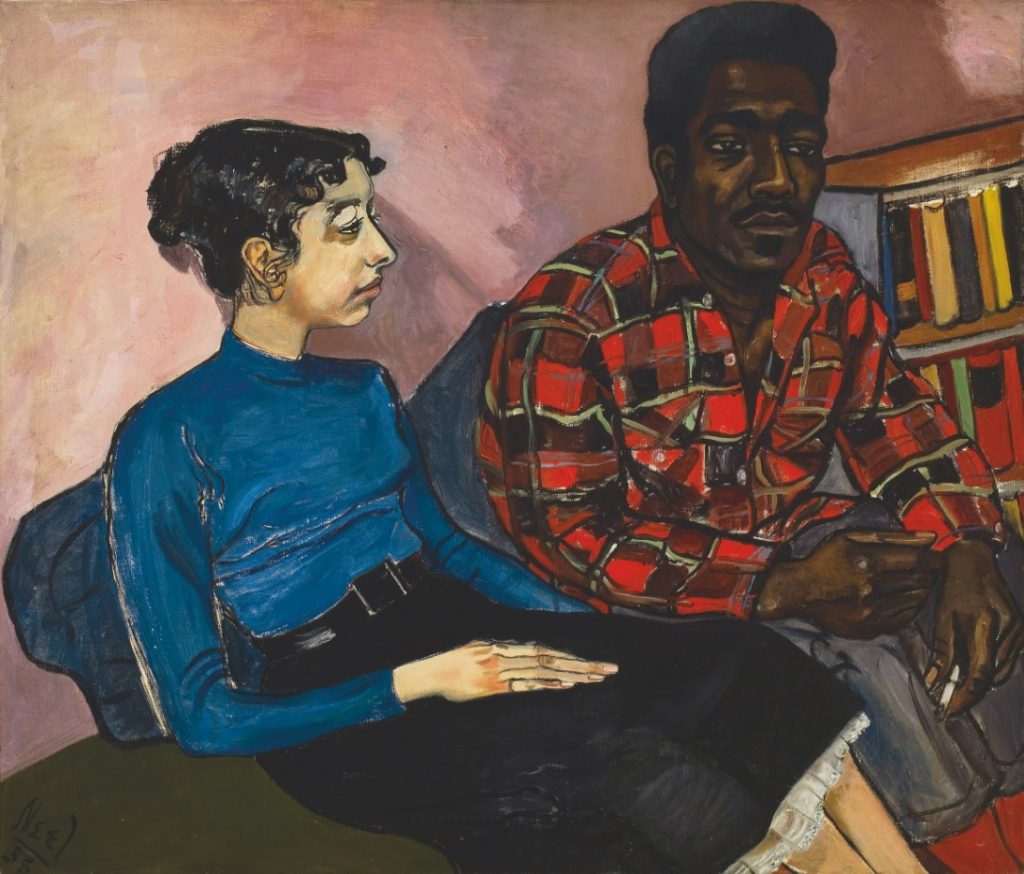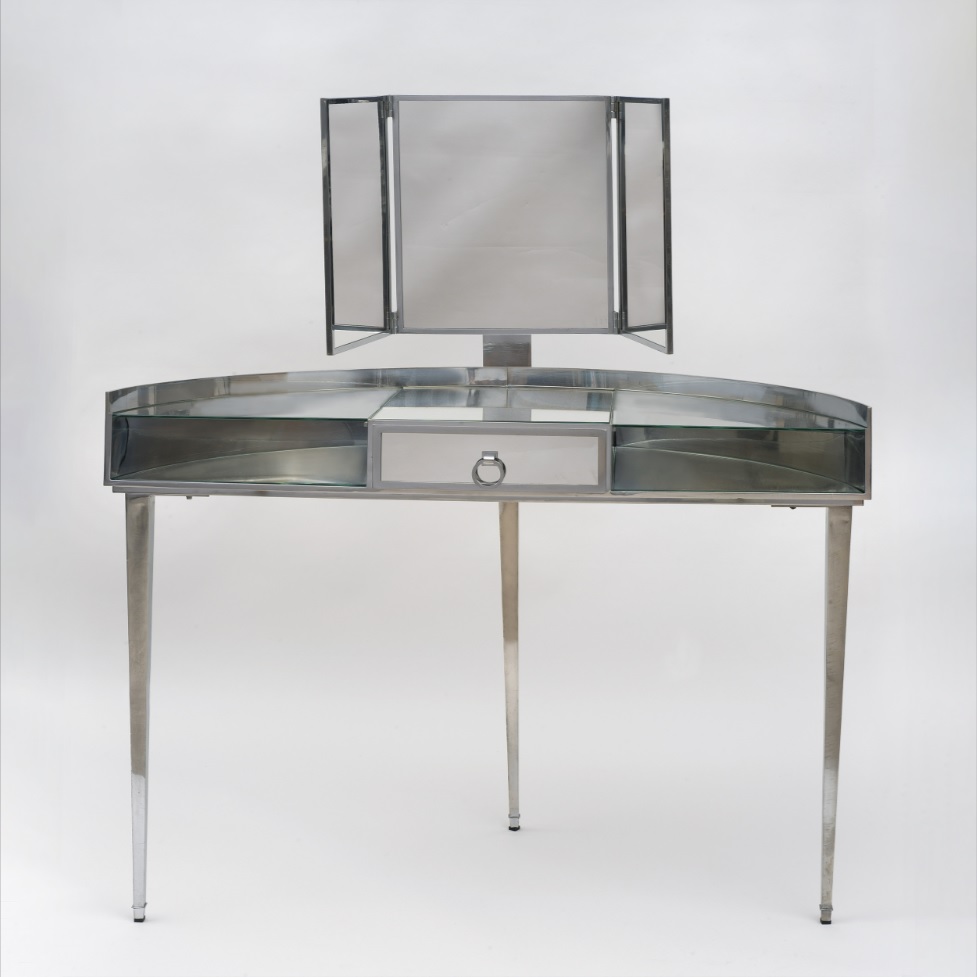
(Clockwise from top left): Lucian Freud ‘Man with a Thistle (Self-portrait)’ 1946. Jeff Koons ‘Apollo Windspinner’ 2020-22. Alice Neel ‘Marxist Girl, Irene Peslikas’ 1972. André Arbus (wood) and Vadim Androusov (bronze), ‘Medusa’ two-door dresser, 1936 (detail). Paul Cézanne ‘Bathers’ 1874-75. Maria Sibylla Merian ‘Branch of Pomelo with Green-Banded Urania Moth’.
Christie’s revised and refreshed pick of this year’s standout exhibitions, from Cézanne in London to Alice Neel in Paris and Jeff Koons on the Greek island of Hydra.
1. Jeff Koons: Apollo
Until 31 October 2022
DESTE Foundation Project Space, Hydra
There hasn’t been a solo Jeff Koons exhibition in Greece for more than 20 years, but this much-anticipated homage to the god Apollo more than makes up for it. Installed across DESTE’s project space at the old slaughterhouse on Hydra, it features new sculptures and readymade objects that create a dialogue examining the relationship between art forms old and new.

Jeff Koons ‘Apollo Kithara’ 2019-2022.
Central to the display is a large, painted sculpture of Apollo, the Greek god of the sun, poetry and music (above). He plays a kithara, an ancient instrument considered to be the forerunner of the guitar, which is encircled by an all-too-realistic snake.
Installed on the roof is Koons’s nine-metre-high Apollo sun sculpture, which spins majestically in the breeze. Among the readymades are a pair of bronze Nike sneakers and a Duchampian urinal.
Ancient frescoes from Boscoreale, near Pompeii, adorn the walls, while ancient and contemporary sounds and smells fill the space. Postponed for two years due to the pandemic, this exhibition demands a pilgrimage to the Aegean Sea.
2. Olafur Eliasson: Nel tuo tempo
22 September 2022 to 22 January 2023
Fondazione Palazzo Strozzi, Florence
Olafur Eliasson puts his audience centre stage. His art, which spans sculpture, painting, photography, film, installation and digital media, engages all the senses, encouraging viewers to reconnect with their surroundings and savour the joy of shared experience.

Olafur Eliasson ‘Beauty’ 1993.
Curated by the director of Fondazione Palazzo Strozzi, Arturo Galansino, this major exhibition brings together historic works and new installations made in response to the palazzo’s Renaissance spaces, from the courtyard and the piano nobile to the Strozzina undercroft.
As you meander around the historic mansion, you’ll encounter pieces that combine colour, water and light to dazzling effect, demonstrating the scope of Eliasson’s creative practice and his skilful command of the sensory experience.
3. Basquiat: Of Symbols and Signs
9 September 2022 to 8 January 2023
Albertina Museum, Vienna
In a period of just eight years, Jean-Michel Basquiat became a 20th-century icon. His raw, radical paintings bubble with untrammelled energy and reference a range of sources, from classical sculpture and graffiti art to politics, capitalism and his own multicultural heritage.

Jean-Michel Basquiat ‘Light Blue Movers’ 1987.
The first major retrospective in Vienna dedicated to the artist investigates his cryptic use of signs and symbols. Spanning his short but prolific career, it brings together around 50 major works from renowned private and public collections, including his monumental early painting La Hara (1981), and Light Blue Movers from 1987 (above), in which he first introduced a recurring motif, the tag ‘IDEAL’.
4. Crawly Creatures
30 September 2022 to 15 January 2023
Rijksmuseum, Amsterdam
Invading the Rijksmuseum this autumn will be more than a thousand little creatures, from toads and lizards to spiders and butterflies, that evoke visceral emotions in humans.
In the Middle Ages, people associated these small beasts with death and the devil, but over the centuries their beauty came to grip the imagination of scientists and artists including Albrecht Dürer, Wenzel Jamnitzer and Jan van Kessel.

Otto Marseus van Schrieck ‘Forest Floor Still Life with Insects and Amphibians’ 1662.
Featuring more than 140 works of art, Crawly Creatures examines the changing perceptions of insects, reptiles and amphibians in the arts and sciences through the 16th and 17th centuries.
Highlights include the first drawing of an insect as the main subject by Dürer, Rubens’s Medusa dating from around 1618, and rediscovered specimens — preserved in formaldehyde — from the collection of the 17th-century apothecary and zoologist Albertus Seba.
5. Lucian Freud: New Perspectives
1 October 2022 to 22 January 2023
National Gallery, London
To mark the centenary of Lucian Freud’s birth, the National Gallery presents the first significant survey of his paintings in 10 years. Through 65 paintings from across his seven-decade career, it will chart Freud’s development, while offering fresh views on his life and art.

Lucian Freud ‘Girl with Roses’ 1947-48.

Lucian Freud ‘The Brigadier’ 2003-04.
It’s a great opportunity to see the remarkable range of Freud’s work and influences — and to appreciate his unflinching commitment to the medium of painting.
6. Cézanne
5 October 2022 to 12 March 2023
Tate Modern, London
Paul Cézanne’s experimentations with space, colour and line shaped the course of figurative art and reframed the still life for good. This once-in-a-generation exhibition examines the people, politics and places that shaped his vision.

Paul Cézanne ‘The François Zola Dam (Mountains in Provence)’ 1877-78.
Through more than 80 paintings, watercolours and drawings, including 22 works never before seen in the UK, Cézanne will follow the artist’s journey from Aix-en-Provence to Paris and back again, underscoring his stylistic flirtation with the Impressionists and the subsequent development of his own visual language.
In doing so, it aims to reveal an artist grappling with what it means to be a modern painter in a rapidly changing world.
7. Alice Neel: Un regard engagé
5 October 2022 to 16 January 2023
Centre Pompidou, Paris
Landing at the Centre Pompidou this autumn is the first monographic exhibition in France dedicated to Alice Neel, a figurative painter at odds with the artistic styles of her avant-garde contemporaries. ‘For me, people come first,’ Neel said in 1950. ‘I have tried to assert the dignity and eternal importance of the human being.’

Alice Neel ‘Rita and Hubert’ 1954.
Organised in two parts, conceived loosely around class struggle and the fight for gender equality, the show brings together some 60 paintings, drawings and archival documents from across her career.
Collectively, her portraits of Latin American and Puerto Rican immigrants, African American writers, homosexual couples and single mothers reveal a life-long commitment to social and political activism. At last, it seems Neel is finally getting the widespread institutional recognition she deserves.
8. Le chic! French Decorative Arts and Furniture from 1930 to 1960
12 October 2022 to 29 January 2023
Mobilier National, Paris
During the first lockdown in 2020, the Mobilier National in Paris — the agency responsible for furniture and objects owned by the French state — launched a restoration campaign to support the nation’s fine craft professionals. Around 110 artisans and maîtres d’art answered the call, collectively restoring 129 pieces from the Mobilier National’s prestigious collection.
This autumn, 22 of these are going on display in a major exhibition tracing the stylistic evolution of French decorative arts and furniture between 1930 and 1960.

Dressing table by Colette Guéden, 1946, GME 10316.
Among the notable treasures is a freshly restored lacquered wood, ivory and gilded bronze desk from 1945 by André Arbus (1903-1969), the designer, sculptor and architect credited with revitalising interest in French decorative arts after the Second World War.
Other highlights include a 1946 chromed metal dressing table made by Colette Guéden for the presidential bathroom at the Elysée Palace (above), and Raphaël Raffel’s 1950s pear-tree wood and bronze desk.
The pieces will be set against elaborate scenography by the celebrated French decorator Vincent Darré in a bid to showcase their histories and contexts, while digital panels will offer insight into the artisanal skills required to construct them, notably upholstery, passementerie, weaving, carpentry and cabinet-making.
9. Picasso/Chanel
11 October 2022 to 15 January 2023
The Thyssen-Bornemisza National Museum, Madrid
Pablo Picasso has been the subject of countless solo and group exhibitions since his death in 1973, but this is the first to spotlight his relationship with the fashion designer Coco Chanel.
Picasso and Chanel first met in the spring of 1917, probably through Jean Cocteau and Misia Sert, and worked together on two notable occasions: first in 1922, on Cocteau’s Antigone, and then in 1924, on Sergei Diaghilev’s Le Train Bleu for his Ballets Russes.

Chanel velvet evening dress, 1927-28.

Pablo Picasso ‘Musical Instruments on a Pedestal Table’ 1914.
Spanning the decade between 1915 and 1925, Picasso/Chanel underscores the creative influence the pair had on each other, as seen in Chanel’s use of geometry, chromatic restraint and angular lines, and Picasso’s portraits of his first wife, the Russian ballerina Olga Khokhlova, one of Chanel’s devoted clients. The exhibition will feature sets and masks by Picasso and costumes by Chanel for the 1922 staging of Antigone, as well as works from Diaghilev’s 1924 ballet.
Don’t miss Picasso’s 1922 work Two Women Running on the Beach (The Race), a small gouache discovered by Diaghilev in Picasso’s studio and later reproduced on an epic scale to adorn the stage curtain for Le Train Bleu.
10. Germany in the 1920s — Neue Sachlichkeit
14 October 2022 to 19 February 2023
Louisiana Museum, Humlebaek, Denmark
This excellent exhibition, first seen at the Centre Pompidou in Paris, looks at the beginnings of the Neue Sachlichkeit (New Objectivity movement) in Germany during the Weimar Republic (1918-1933).

Otto Dix ‘Sylvia von Harden’ 1926.

August Sander ‘Sekretärin beim Westdeutschen Rundfunk in Köln (Secretary at West German Radio in Cologne)’ 1931.
It brings together paintings, drawings, photography, architecture, film and theatre — as well as a large group of works by the German photographer August Sander — that capture a short-lived flourishing of democracy and creative freedom, underlined by the movement’s sober brand of realism.
Cabaret scenes and portraits of prostitutes are shown alongside pictures that take as their themes the working class, modernity and industrialisation. Together they present an unparalleled opportunity to delve deeper into this explosive, tumultuous decade in German socio-political history.
11. Monica Bonvicini
25 November 2022 to 7 May 2023
Neue Nationalgalerie, Berlin
Since coming to prominence in the mid-1990s, Monica Bonvicini has explored the relationship between architecture, power, gender, space, surveillance and control, while questioning the meaning of art-making today.

Monica Bonvicini ‘Be Your Mirror’ 2020.
This comprehensive solo show will feature provocative works from across Bonvicini’s career that reflect her interest in the gendered quality of constructed spaces. It will also include a new series of works that reimagine famous structures, including the venue for the exhibition itself, Mies van der Rohe’s Neue Nationalgalerie, to reveal the male chauvinism imbued within them.
12. Barbara Hepworth: Art and Life
26 November 2022 to 1 May 2023
Tate St Ives, Cornwall, England
Through more than 50 sculptures, rarely seen drawings, paintings and archival materials, this landmark retrospective will examine the influence of the St Ives school artists and the Cornish landscape on the art and life of Barbara Hepworth.

Barbara Hepworth with the plaster prototype for the United Nations’ ‘Single Form’ in May 1963.
First seen at the Hepworth Wakefield, it will take visitors on a chronological journey from her initial studies at Leeds School of Art and her artistic life in London — focusing on her move from figuration towards abstraction — to the post-war years in St Ives, where she began exploring the possibilities of the neutral space.
Coinciding with the 30th anniversary of Tate St Ives, the exhibition is an excellent opportunity to celebrate Hepworth’s pioneering vision and unrelenting desire to push the boundaries of modern sculpture.
Source: Christie’s







